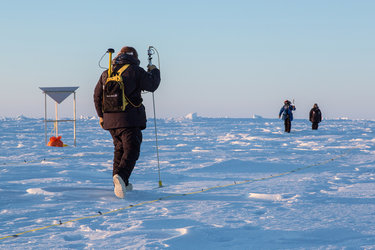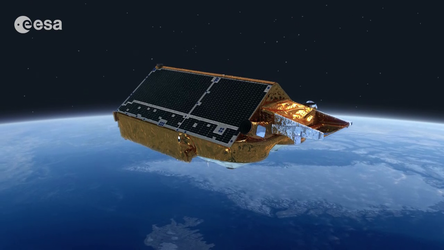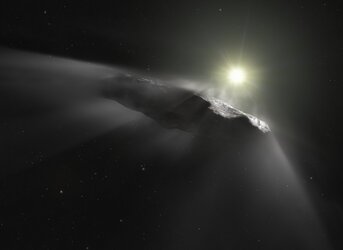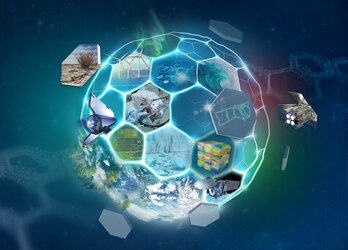Accept all cookies Accept only essential cookies See our Cookie Notice

About ESA
The European Space Agency (ESA) is Europe’s gateway to space. Its mission is to shape the development of Europe’s space capability and ensure that investment in space continues to deliver benefits to the citizens of Europe and the world.
Highlights
ESA - United space in Europe
This is ESA ESA facts Member States & Cooperating States Funding Director General Top management For Member State Delegations European vision European Space Policy ESA & EU Space Councils Responsibility & Sustainability Annual Report Calendar of meetings Corporate newsEstablishments & sites
ESA Headquarters ESA ESTEC ESA ESOC ESA ESRIN ESA EAC ESA ESAC Europe's Spaceport ESA ESEC ESA ECSAT Brussels Office Washington OfficeWorking with ESA
Business with ESA ESA Commercialisation Gateway Law at ESA Careers Cyber resilience at ESA IT at ESA Newsroom Partnerships Merchandising Licence Education Open Space Innovation Platform Integrity and Reporting Administrative Tribunal Health and SafetyMore about ESA
History ESA Historical Archives Exhibitions Publications Art & Culture ESA Merchandise Kids Diversity ESA Brand Centre ESA ChampionsLatest
Space in Member States
Find out more about space activities in our 23 Member States, and understand how ESA works together with their national agencies, institutions and organisations.
Science & Exploration
Exploring our Solar System and unlocking the secrets of the Universe
Go to topicAstronauts
Missions
Juice Euclid Webb Solar Orbiter BepiColombo Gaia ExoMars Cheops Exoplanet missions More missionsActivities
International Space Station Orion service module Gateway Concordia Caves & Pangaea BenefitsLatest
Space Safety
Protecting life and infrastructure on Earth and in orbit
Go to topicAsteroids
Asteroids and Planetary Defence Asteroid danger explained Flyeye telescope: asteroid detection Hera mission: asteroid deflection Near-Earth Object Coordination CentreSpace junk
About space debris Space debris by the numbers Space Environment Report In space refuelling, refurbishing and removingSafety from space
Clean Space ecodesign Zero Debris Technologies Space for Earth Supporting Sustainable DevelopmentLatest
Applications
Using space to benefit citizens and meet future challenges on Earth
Go to topicObserving the Earth
Observing the Earth Future EO Copernicus Meteorology Space for our climate Satellite missionsCommercialisation
ESA Commercialisation Gateway Open Space Innovation Platform Business Incubation ESA Space SolutionsLatest
Enabling & Support
Making space accessible and developing the technologies for the future
Go to topicBuilding missions
Space Engineering and Technology Test centre Laboratories Concurrent Design Facility Preparing for the future Shaping the Future Discovery and Preparation Advanced Concepts TeamSpace transportation
Space Transportation Ariane Vega Space Rider Future space transportation Boost! Europe's Spaceport Launches from Europe's Spaceport from 2012Latest
Cryo2ice for better measurements of ice, snow and polar oceans
Thank you for liking
You have already liked this page, you can only like it once!
Cryo2ice brings together two of the world’s greatest ever ice missions, ESA’s CryoSat and NASA’s ICESat-2, to gather data from each satellite over the same stretches of ice at approximately the same time.
CryoSat and ICESat-2 are the only satellite altimeters in existence measuring as far north and south as 88ᵒ and are key to our ongoing efforts to monitor the rapidly changing polar regions.
The Cryo2ice partnership began in 2020, when the CryoSat team at ESA’s mission control centre in Darmstadt, Germany performed a series of manoeuvres to bring the orbits of the two satellites closer together over the Arctic. Two years later, another tweak to CryoSat’s orbit switched the focus to Antarctica, instead.
Since the adjustment to CryoSat’s orbit, the time between collocated measurements of CryoSat and ICESat-2 has been slowly reducing, meaning that in early 2025 the two satellites will provide quasi-simultaneous measurements. It will be a boost to researchers studying sea ice, as the closer together in time between measurements, the less the sea ice will have moved, giving a more accurate snapshot of the same ice.
CryoSat’s radar and ICESat-2’s lidar both measure the elevation of sea ice and land ice by sending signals down to Earth and then detecting radar echoes and photons backscattered off the surface, but there are differences. For example, penetration of the radar and lidar signals can be different in the snowpack on top of ice. The thickness of snow on sea ice remains one of the biggest uncertainties in our estimates of ice using satellite altimetry, and Cryo2ice offers a unique opportunity to measure it more accurately.
-
CREDIT
ESA - European Space Agency This video includes third party content. It shall not be modified, and parts of the video (e.g. footage, animations, music etc.) shall not be used in other productions without explicit authorisation by ESA. -
LICENCE
ESA Standard Licence
-
Closed captions available Captions and subtitles are available (automatically generated by YouTube) - select your language using the YouTube player controls. A non-YouTube version is available using the 'download' button above.
-
VNR
-
-
-
-

Introducing CryoSat’s incredible ice, snow and water…

Trekking out for CryoSat

CRYO2ICE

CryoSat















 Germany
Germany
 Austria
Austria
 Belgium
Belgium
 Denmark
Denmark
 Spain
Spain
 Estonia
Estonia
 Finland
Finland
 France
France
 Greece
Greece
 Hungary
Hungary
 Ireland
Ireland
 Italy
Italy
 Luxembourg
Luxembourg
 Norway
Norway
 The Netherlands
The Netherlands
 Poland
Poland
 Portugal
Portugal
 Czechia
Czechia
 Romania
Romania
 United Kingdom
United Kingdom
 Slovenia
Slovenia
 Sweden
Sweden
 Switzerland
Switzerland


























